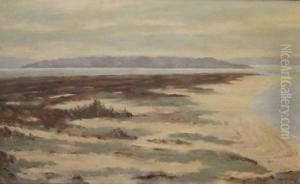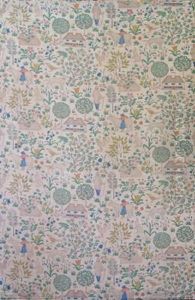Charles F. Annesley Voysey Paintings
Charles Francis Annesley Voysey, known as C.F.A. Voysey, was an English architect and furniture and textile designer, renowned for his contribution to the Arts and Crafts movement. Born on May 28, 1857, in Hessle, Yorkshire, England, Voysey was the son of a reverend. His father’s religious nonconformism and eventual heretical views would influence Voysey’s own independent thinking in design.
Voysey was educated at Dulwich College in London. He then apprenticed with the architect J.P. Seddon, where he gained practical experience in the Gothic Revival style. However, it wasn't long before Voysey's own design aesthetics began to diverge from the historicism of his early training. By the 1890s, he had established his own architectural practice and was advocating for simpler forms and the honest use of materials, which was a departure from the ornate Victorian styles prevalent at the time.
His architectural works are characterized by their distinct white-rendered facades with horizontal ribbon windows, sweeping roofs, and emphasis on horizontal lines. Simplicity, functionality, and harmony with nature were key principles in his work. Although he did not achieve widespread commercial success during his career, his houses, such as 'The Orchard' in Chorleywood (built for himself in 1899), reflect his ideals and had a lasting influence on the development of modern residential architecture.
In addition to architecture, Voysey was also a successful designer of wallpapers, fabrics, and furnishings. His patterns often featured stylized natural forms such as birds, plants, and flowers, and were marked by their elegant simplicity and use of color. His textile and wallpaper designs contributed greatly to the visual language of the Arts and Crafts movement and were commercially popular.
Voysey's influence extended beyond his lifetime as his ideas presaged the modernist movement, with his emphasis on form following function and his minimalist aesthetic. His work has been considered a bridge between the Arts and Crafts movement and the modernism of the 20th century, influencing architects and designers like Frank Lloyd Wright.
C.F.A. Voysey's career spanned over 50 years, during which he received several honors, including a RIBA Gold Medal in 1940. He died on February 12, 1941, in Winchester, Hampshire, England. Today, Voysey is remembered as a pioneer in modern design, and his buildings and patterns are still celebrated for their clarity, simplicity, and timeless beauty.

